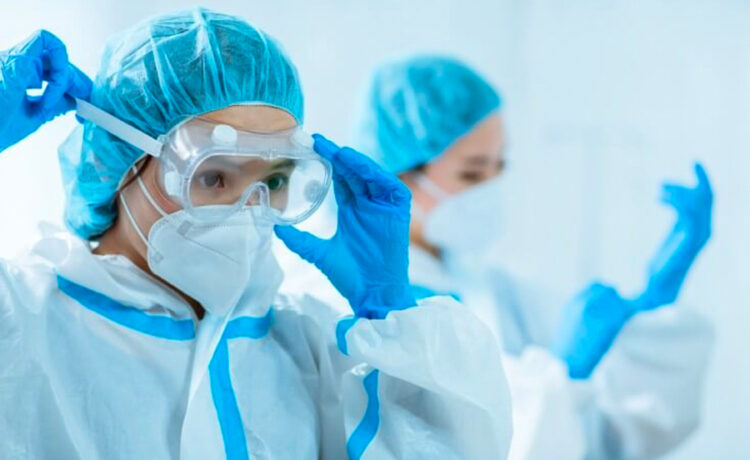Health care professionals all around the globe place a high value on protecting themselves so that they may continue to assist others. Becoming knowledgeable about infection control methods, wearing personal protective equipment (PPE gear), practising good hand hygiene, and properly disposing of potentially hazardous trash are all part of this process. The threat to healthcare workers has increased dramatically during the COVID-19 epidemic.
What is PPE?
PPE is a term that refers to personal protective equipment. PPE shields the wearer from hazards that may endanger their health or safety while at work. For example, it may contain protective equipment like safety helmets, eye protection, reflective clothes, and safety harnesses. Respiratory protection equipment is also included (RPE) as a barrier between infectious elements like viruses and germs. Personal protective equipment (PPE) protects you against their getting into your mouth, nose, eyes, or skin.
What is the significance of personal protective equipment?
Employers must provide guidelines, processes, training, and oversight to ensure a safe workplace to help employees practise safe behaviour. Even with the use of engineering controls and safe work methods, certain risks may still exist. These are some examples of the harms that have been done:
Inhaling polluted air may damage the lungs. Falling objects can damage the head and feet. Eyes can be damaged by flying particles or splashes of corrosive liquid. Skin can be damaged by contact with corrosive chemicals. In these situations, personal protective equipment (PPE gear) is required to minimise the danger.
Types of Gear
1. PPE Gloves:
Protect your hands from germs and help keep them clean by reducing the transmission of infectious agents.
2. Masks:
Use a mask to hide your face and your nasal passages. Some masks come with a see-through plastic component that conceals your eyes while wearing the mask (shield). A respiratory mask (respirator) fits snugly over your nose and mouth to keep contaminants out. Inhalation of tiny organisms, such as TB bacteria, should be minimised.
3. Eye protection:
Face shields and goggles are both examples of eye protection. You can protect your eyes’ mucous membranes with these lenses by keeping body fluids out. Microbes in the fluids may enter the body via the mucous membranes if they come into touch with the eyes.
4. Clothing:
Gowns, aprons, hats, and shoe coverings are examples of appropriate attire.
Things to look for before choosing and using PPE gear:
Look for Personal Protective Equipment (Enforcement) Regulations 2018 CE-marked goods – providers may help you with this.
Consider the size, fit, and weight of the PPE while making your selection. If consumers are involved in the selection process, they are more likely to utilise it.
If you’re wearing more than one piece of PPE, ensure they’re compatible with each other. For example, wearing safety glasses while wearing a respirator may disrupt the seal, resulting in air leakage.
To remove gloves safely, teach and educate others on how to do it without polluting themselves. Tell them why, when, and what the limits of the tool are.
Maintenance of PPE
Personal protective equipment (PPE) should be kept in a dry, clean cabinet when not in use. If it’s going to be used again, make sure it’s clean and well-maintained.
Important Guideline for using PPE
Maintaining a supply of suitable disposable suits is helpful for filthy tasks where washing expenses are high. For example, for visitors who need protective gear, utilising replacement components that match the original, e.g. respirator filters.
When using personal protective equipment, employees must report any damage, loss, or theft of the equipment to their supervisors.









